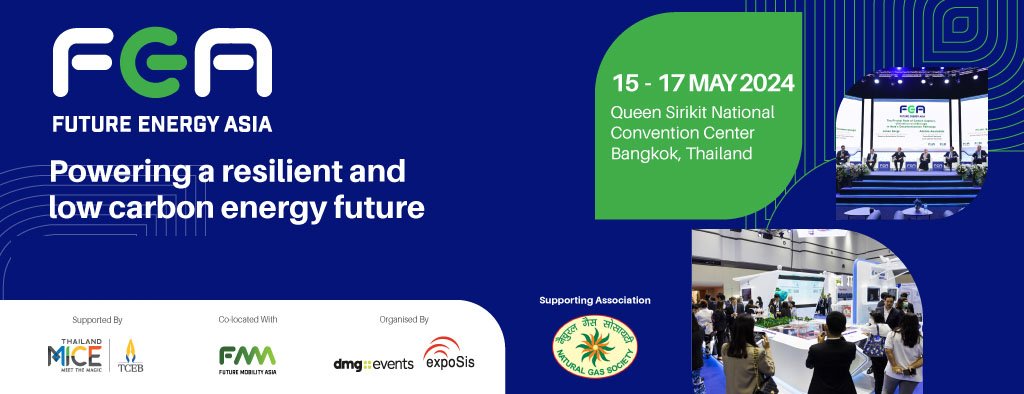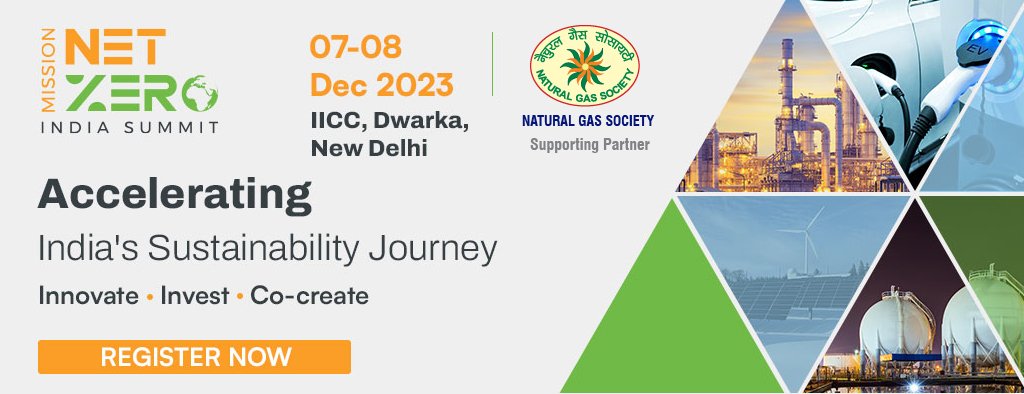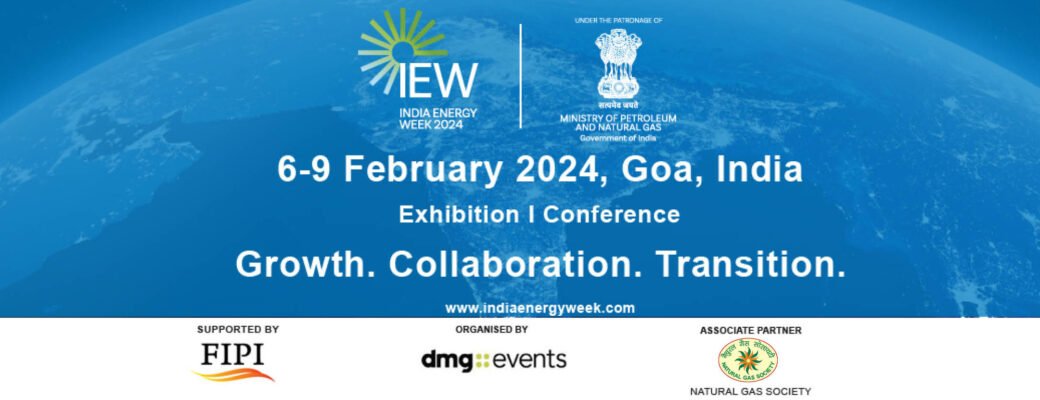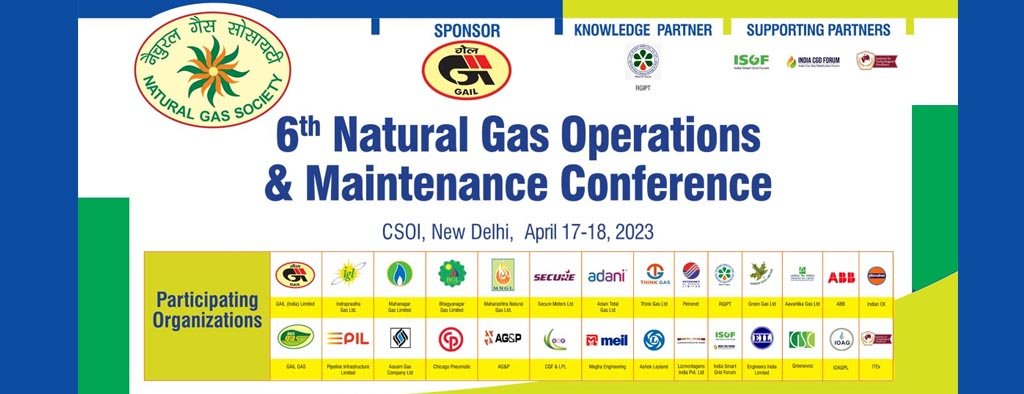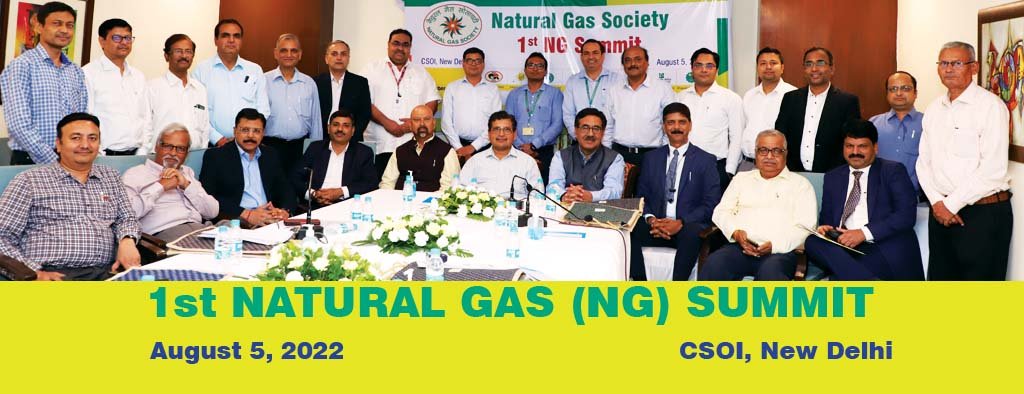
NGS’ NG/LNG SNAPSHOT – MAY 2019, VOLUME I
National News Internatonal News
NATIONAL
|
City Gas Distribution & Auto LPG Natural Gas / Pipelines / Company News Policy Matters/Gas Pricing/Others
|
SNAPSHOT: NATIONAL
 Electric Mobility
Electric Mobility
EV market segmentation – reasons, needs & challenges
 Public transportation is much used by the people for their everyday commuting purposes. Most of the public transportation includes buses, auto rickshaws in urban cities as it costs less.
Public transportation is much used by the people for their everyday commuting purposes. Most of the public transportation includes buses, auto rickshaws in urban cities as it costs less.
read more
So the adoption of electric three-wheelers and buses in the country can make a huge effect on the environment and the people. It is the key term observed in the Asian markets. In India and Thailand autorickshaws is the major source for public transportation in the urban cities. According to the VynZ Research, conventional autorickshaw owners are opting the e-rickshaws and e-auto as the costs less for maintenance. Apart from the three-wheelers, in urban cities is also preferring scooters and motorcycles for everyday commutes as it saves them on costs and time.
Global electric bus market is growing at 16.2% CAGR. Three-wheeler market in India is predicted to grow at 45.2% CAGR. Based on the product the EV market is categorized in two-wheeler and four-wheelers out of which two-wheelers have the largest share in the market as almost in all urban cities the traffic is the major concern among the commuters, hence people opting for two-wheelers and shifting trends to EVs. Out of voltage such as 24V, 36V, 48V, 60V, 72V, 48V is the used in most of the e-rickshaws and e-scooters.
Government is the major support for the development of EVs as it fuels the demand of the country. Speedy urbanization leads to traffic congestions which result in more emissions and hence the need for EVs increases.
Cost of batteries is the main reason for EVs higher prices. Lack of infrastructure is another impediment in the growth of EVs, however, government and manufacturers have taken many initiatives to install charging infrastructure.
Source: ElectricVehicles.in[Edited]
show less
SBI launches Discount loan for EV buyers
The State Bank of India (SBI) launched a discount loan for buyers of EVs pricing 20 basis points lower than its existing auto loans. The car industry is around 3.6 million (FY19) out of which 1,000 units are EVs per annum.
read more
According to the industry data car and two-wheelers notches up over 54,000 units annually despite policies, incentives for the EVs. SBI, Managing Director, Retail and Digital Banking believes that SBI green car loan scheme would act a change agent in the auto loan segment and encourage customers to switch to electric vehicles which can improve overall air quality and lower carbon emissions. The green scheme offers the longest repayment period of 8 years and is a strategic addition to the bank’s loan segment which is provided with zero processing fee for the first six months of the launch.
Source: ElectricVehicles.in [Edited]
show less
Tata Power to enter into EV charging & energy storage sector
Tata Power Ltd is a Mumbai based Indian electric utility company which generates, transmits and distribute electricity. The company has signed a memorandum of understanding with an Indian state-owned oil and natural gas company,
read more
Hindustan Petroleum Corporation Limited (HPCL). Tata, AES, Mitsubishi recently commissioned a 10 MW battery energy storage system in Delhi. As per Mercom India reports, India ranks at the third position in the solar market after the China and US with 8.3 GW of solar PV capacity installed in the year. It says there are over 300 utility-scale project developers in the country with projects of at least 5 MW or more in operation. Tata is the largest organization in installations in the solar rooftop segment.
Source: ElectricVehicles.in
show less
SNAPSHOT: NATIONAL
 Natural Gas / Pipelines / Company News
Natural Gas / Pipelines / Company News
LNG leak at Kakkanad a wake-up call for officials
The regasified liquefied natural gas leak from the pipeline of Indian Oil Adani Gas Private Limited (IOAGPL) and the resultant fire at Palachuvadu near Kakkanad have raised safety concerns as agencies like KWA, KSEB and telecom companies dig up roads for laying underground cables without taking precautionary measures.
read more
In the wake of this GAIL would convene a meeting of all agencies which used to dig up roads for various purposes. “It was around 4.40am on Tuesday that the fire broke out. We were digging up the road for laying underground cables as part of augmenting the capacity of Kaloor Substation to 220kV from the existing 110kV. We use horizontal directional drilling (HDD) method for trenching. Kochi corporation, Thrikkakara municipality and PWD prefer HDD as the method would avoid the inconveniences caused by open trenching. We had sought the support of IOAGPL officials,” said deputy chief engineer of trans grid south, KSEB, K Santhosh. “IOAGPL informed us that gas pipeline is going through the right side of the road while our trench is on the left side. Moreover, the work was being done under the supervision of IOAGPL official. At the spot in Palachuvadu, where the fire occurred, the IOAGPL pipeline was inclined towards the left, which the officials had not conveyed to us. When we went ahead with the drilling, the pipeline got damaged causing gas leak,” he said. IOAGPL said that there is no reason to panic in such situations as RLNG is safer compared to LPG. However, Gail officials said that they are viewing the incident seriously, though there is less chance of accidents due to LNG leakage. “Many agencies are digging up the roads without taking the underground installations into consideration. Through the meeting, we intend to educate all these agencies about the LNG pipelines passing through each area,” said Gail general manager Tony Mathew.
show less
RIL, Shell may not seek extension of Panna-Mukta fields’ contracts
 Reliance Industries and Royal Dutch Shell plan to exit the Panna-Mukta oilfields when their contracts with the government expire this year, people familiar with the matter said.
Reliance Industries and Royal Dutch Shell plan to exit the Panna-Mukta oilfields when their contracts with the government expire this year, people familiar with the matter said.
read more
This would likely leave the task of managing these depleting fields with staterun Oil & Natural Gas Corp. Reliance and Shell each own a 30% participating interest in the Panna, Mukta and Tapti (PMT) fields, located close to the Bombay High offshore facility of ONGC, which holds the balance 40%. The two companies have conveyed to the government that they don’t want their production-sharing contract for PMT extended beyond December 2019 when the 25-year term ends, the people said. Panna and Mukta produced 1.08 million barrels of crude oil and 13.5 billion cubic feet of natural gas in the October-December quarter, as per Reliance’s earnings report. Tapti stopped producing three years ago. Some of its facilities have been handed over to ONGC. Reliance, Shell and ONGC declined to comment for the story. Reliance and Shell are engaged in an arbitration with the government over the state’s share of revenue from the PMT fields. ONGC is not party to the arbitration, but will have to honour the arbitration award. Last year, the oil ministry ordered Reliance, Shell and ONGC to together pay $3.8 billion as the increased share of the government’s earnings from the PMT fields, following an arbitration award in the government’s favour. Reliance and Shell challenged the award in a UK court, which upheld the arbitration panel’s decision on most counts but referred the matter over how much development cost the companies could recover back to the tribunal, which is again hearing it. Once Reliance and Shell exit, the fields might become more remunerative for ONGC as the shares of the two private companies in the revenue will go away, another person said.
show less
Higher domestic gas prices, rising volumes to drive ONGC’s earnings further
As oil realisation outlook improves, higher domestic gas prices and rising volumes will drive earnings further.
read more
As the Brent crude oil price continues its uptrend and is now trading close to its 2019 highs, the share price of India’s largest crude oil producer, Oil and Natural Gas Corporation (ONGC), too, has gained more than 20% from its February lows. While rising crude prices will benefit the upstream oil producer, which also owns oil and gas fields in the overseas markets through its subsidiary ONGC Videsh, ONGC will also benefit from an increase in domestic gas prices as well as production, being the largest gas producer in the country. With the pricing and volume outlook improving, analysts expect its gas segment to aid earnings growth significantly during FY19-21. Not surprising, ONGC remains the pick (within oil and gas space) of many brokerages, including Jefferies and CLSA.
In fact, analysts say that oil subsidies have reduced significantly from 1.3 per cent to 0.2 per cent of gross domestic product in the past five years, and expect further action on liquefied petroleum gas subsidies, with the same becoming negligible in the next two-three years. Those at CLSA say that action to cut oil subsidies further to a more manageable level could allay subsidy burden fears on ONGC/Oil India (OIL) and act as a big trigger, as they forecast the ONGC stock to deliver a 150 per cent return over three years. The recent gas price hikes provide further confidence in ONGC’s future earnings. Domestic gas prices have been raised by almost 10% to $3.69 per MMBtu for the April–September 2019 period, compared to $3.36 per MMBtu during October 2018 to March 2019 period. This bodes well for the company’s earnings and more so as it is seeing rising gas production. Analysts say that rising gas prices will benefit ONGC as well as OIL (another state-owned oil and gas producer), where every $1 per MMBtu increase in prices lifts their earnings by 10-11 per cent. For ONGC, whose gas production is also at lifetime highs, analysts at Jefferies expect the company’s gas segment to be a key tailwind for earnings in FY19-21 and beyond, as its deep-water projects ramp up where realisations are materially higher ($9.32 is the price ceiling during April-September 2019 period). Analysts at Motilal Oswal Securities (MOSL) thus, expect ONGC’s gas production to grow 5-6 per cent annually for the next three-four years, while they estimate its oil production to increase marginally. Some of the above-stated gains, however, could get offset at the consolidated level (ONGC owns 51.11 per cent in Hindustan Petroleum), given that refining and petrochemical margins have been under pressure recently. Overall, MOSL analysts say that ONGC has no subsidy burden so far, it has strong dividend yield, and stock valuations are attractive.
show less
GAIL highest bidder for IL&FS wind assets with $689 million offer
GAIL’s offer contemplates no hair-cut to the debt of the plants, which is around 37 billion rupees, IL&FS said
read more
New Delhi: GAIL (India) Ltd is set to complete the purchase seven wind power plants from India’s debt-ridden Infrastructure Leasing and Financial Services (IL&FS), after offering 48 billion rupees ($689.3 million), IL&FS said on Monday, April 22. The deal is expected to close within three weeks. GAIL’s offer contemplates no hair-cut to the debt of the plants, which is around 37 billion rupees, IL&FS said. Last year, sources told Reuters that GAIL would not consider buying the entire wind energy assets of IL&FS unless offered at a steep discount. The Indian government replaced IL&FS’ entire board earlier this month after recent defaults on some of its debt obligations triggered sharp declines in stock and debt markets, leading to fears about contagion in India’s financial sector. IL&FS has initiated the sale several assets, including road and education, to pay off its debt.
show less
Tamil Nadu farmers warn of massive stir against proposed hydrocarbon wells
Adding fuel to the burning protests against the ongoing hydrocarbon exploration projects, the Union ministry of environment has given permission to the ONGC to conduct detailed environmental impact assessment studies for the proposed drilling of 40 hydrocarbon wells in Nagapattinam and Cuddalore districts.
read more
The move has come in for condemnation from farmers associations who have threatened of massive protests against the proposal. The entire farming community has been urging both the state and central governments to declare the entire delta region as a protected agriculture zone, but the latest permission given by the Centre has not gone down well with the farmers. State deputy president of Tamil Nadu Farmers Association PS Masilamani recalled the poll promises put forth by political parties at the time of campaign. “Almost all parties promised that the delta would be declared as a protected agriculture zone. What is the Union government’s urgency to give the nod to ONGC to dig 40 wells across the delta districts,” he asked. The Centre has accorded the nod for the study, but the Tamil Nadu government should not permit to proceed further, he added. “Exploration of hydrocarbon is a policy decision of the ruling BJP government. However, the recently concluded polls clearly indicate that it will not come to power again, so the BJP is in a hurry to execute the project before the next government assumes charge at the Centre,” he alleged. ONGC already has 27 permits in the delta region and now they have 40 more. No public opinion hearings were conducted. So, the government is not working for the benefits of the people, the farmers alleged.
show less
GAIL pipeline project faces stiff opposition from villagers in Nangur, Tamil Nadu
 Villagers from Nangur near Sirkazhi are the latest to come out in opposition to a GAIL pipeline-laying project. The underground pipelines are to be laid near Sirkazhi. After resistance from Vettangudi villagers in February, the earthing process for the pipelines has run into opposition in Nangur for the past one week.
Villagers from Nangur near Sirkazhi are the latest to come out in opposition to a GAIL pipeline-laying project. The underground pipelines are to be laid near Sirkazhi. After resistance from Vettangudi villagers in February, the earthing process for the pipelines has run into opposition in Nangur for the past one week.
read more
The project was stopped on April 13 after a protest. A peace meeting was convened after the elections on Wednesday, April 24, but a compromise could not be reached between villagers, farmers, GAIL and revenue officials. Despite attempts at a compromise, the villagers staged a walkout. The pipes were reportedly being laid between Pazhayapalayam near Sirkazhi to Maemathur near Tharangambadi over a distance of 29 km. The pipes are capable of transporting six lakh cubic metres of fuel from ONGC exploration wells in Pazhayapalayam and to a natural gas plant in Maemathur. The pipes pass through Vembadi, Vettangudi, Edamanal, Thirunagari and Nangur. The pipes are being planted at a depth of 1.5 metres and have a diameter of 24 inches. “Neither the district administration nor GAIL has taken steps to clear the concerns of farmers that the pipelines would not affect our fields and neighbouring fields,” said S Nedunchezhiyan of Nangur. A GAIL official said, “GAIL pipes have been laid at over 250 locations places in the delta for the past 25 years. There were not too many cases of leakage from the pipes. Even if there are reports of leaks, we are fully prepared to prevent them from polluting fields.” Meanwhile, pipelaying process resumed in Nangur amid police protection on Thursday. “The revenue and police officials assured of a bigger peace meeting where all the stakeholders would be convened. However, everyone went back on their words, and they went ahead with the project,” said a farmer.
show less
SNAPSHOT: NATIONAL
 Policy Matters/Gas Pricing/Others
Policy Matters/Gas Pricing/Others
All you wanted to know about… Domestic gas pricing formula
 Earlier this month, gas producers in the country had reason to smile.
Earlier this month, gas producers in the country had reason to smile.
read more
The Centre increased the price of domestic natural gas by nearly 10 per cent to $3.69/mmbtu. This was the fourth consecutive hike in the past two years. This price is determined using a formula introduced in October 2014.
What is it?
Much of the natural gas being produced in the country does not command a market-determined price that is, it is not determined by buyers and sellers based on demand-supply dynamics in the market. Rather, a formula and a peculiar one at that is used to fix the price of the fuel every six months. As per the formula, the domestic gas price is the weighted average price of four global benchmarks the US-based Henry Hub, Canada-based Alberta gas, the UK-based NBP, and Russian gas. The domestic price is based on the prices of these international benchmarks in the prior year, and kicks in with a quarter’s lag. It applies for six months. So, the price applicable from April 1 to September 30, 2019 is based on benchmark prices from January to December 2018. This formula-based pricing has some interesting features and outcomes. One, the formula has no mention about gas actually imported into India. Typically, gas imported in Asian markets is costlier than many international benchmarks. In effect, the price of domestic gas is lower than that of gas imports. Next, the averaging of benchmark prices over the past year and then the time lag of a quarter mean that the domestic gas price movement is often out of sync with what’s really happening on the ground. For instance, global gas prices were rising for a good part of the last year but have been on a decline in the last few months. But courtesy the formula, domestic gas producers have now been handed out price hikes, even as many global producers are taking price cuts.
Why is it important?
Domestic gas prices have been rising in the past couple of years but thanks to the formula, they are still cheaper than imported gas. Now, this acts as disincentive to local producers such as ONGC, Oil India and Reliance Industries who often find that the price is not worth their time and effort to increase output. What follows then are increased gas imports at higher prices. Over the years, India’s import dependency has steadily risen and now is inching towards 50 per cent. As a lollipop to domestic producers, the Centre in March 2016 offered ‘pricing freedom’ for gas produced from discoveries in difficult locations (deep water, ultra-deep water and high pressure-high temperature areas). But even here, the price is not truly market-linked and there is a cap based on prices of alternative fuels. So, for such gas, the price ceiling for the April to September 2019 period is $9.32/mmbtu, the highest in two years. To be fair, the Centre has been taking corrective steps such as giving pricing freedom under the new Hydrocarbon Exploration Licensing Policy. But output from many of the fields that are already producing are still subject to formula-based pricing.
Why should I care?
Producers may be pleased with higher gas prices, but consumers often shell out more. Natural gas is used by many sectors including city gas distribution, fertilisers and power. City gas producers have been given priority allocation of domestic gas. As the price of the fuel rises, therefore, you must be prepared to pay more for the compressed natural gas (CNG) you fill in your car and for the piped natural gas (PNG) you receive in your kitchen. Your power bills and food costs could also go up. The Centre walks a tightrope here, balancing interests of producers and consumers.
Bottom-line
Gas is not just a state of matter; it is also a matter of the State.
show less
Gas-based plants may get to sell power in spot market
Subsidy scheme aimed at reviving projects worth 25,000 mw in the works. The government is considering a proposal to allow gas-based power plants to sell electricity in the spot market under a subsidy scheme.
read more
We are contemplating if we can work out a mechanism where these gas-based power plants can also sell on power exchanges without depending on the power purchase agreements,” a government official said. The proposed e-RLNG (re-gasified liquefied natural gas) scheme, being drafted by power and oil ministries as per the recommendations of a high-level empowered committee headed by cabinet secretary PK Sinha, is likely to require lesser than earlier projected subsidy due to softened global crude oil prices, the official said. As per the proposal, the government is considering gas auction mechanism for the electricity generating units by pooling any domestic gas with LNG and subsidising the tariffs to revive about 25,000 mw projects, the official said. The scheme is proposed to be run for two years beginning the current fiscal. It will be similar to the e-RLNG scheme run between 2015-16 and 2016-17 based on financial support from the Power System Development Fund. The government had recently allowed power plants to use coal supplied by Coal India Ltd to supply electricity in short-term market. Industry experts said RLNG price is hovering around $8 per MMBtu. In the previous rounds, the government had subsidised the tariffs at ₹5.50 per unit. The ministry, however, this time might stick to ₹4.24 per unit tariff that was discovered through its PPA auctions last year. Earlier the government was considering pooling ONGC deep sea gas with LNG. The government had launched an e-RLNG scheme in March 2015. The scheme was discontinued after two bidding rounds after the power ministry received aggressive bids from companies. Power companies have been demanding the government to restart the scheme as about 7,500-mw capacity is completely stranded while the rest is stressed. Presently, the country has nearly 25,000-mw of operational gas-based capacity, all of which is stressed because of gas unavailability. Against total requirement of 117 mmscmd (million metric standard cubic metres per day), total gas supply in 2017 was 30 mmscmd.
show less
Power to the kitchen: Govt to promote electricity as cooking fuel
The Ministry of New and Renewable Energy (MNRE) has requested the Ministry of Petroleum and Natural Gas (MoPNG) to divert a part of the cooking gas and kerosene subsidy (around Rs 25,000 crore/year) towards solar photovolataic (PV) cooking. After the completion of 100% household electrification through the Saubhagya scheme, the government is now exploring ways to increase the usage of electricity for cooking.
read more
Apart from reducing emissions, electricity-based cooking is also seen to reduce the country’s import dependency for energy. Experts are also banking on rising solar generation capacity to completely replace kerosene as a source of cooking fuel. We have no such mechanism to transfer subsidy amount towards solar cooking,” a senior MoPNG official told FE. The MNRE proposed that out of the Rs 50,000 required to install solar PV cooking systems in a household, the MoPNG could pay `20,000 as subsidy, while the rest could be mobilised through bank loans. The petroleum ministry is understood to have given its comments to MNRE on this issue. As FE reported earlier, recognising the fact that subsidies on liquefied petroleum gas (LPG) were creating distortions in adopting cleaner forms of fuel, the NITI Aayog had suggested to the MoPNG that beneficiaries of LPG subsidy should instead be given a ‘cooking subsidy’ to allow consumers the freedom to decide on the cooking fuel variant. According to a NITI Aayog study, the consumption of 8 to 10 LPG cylinders (14.2 kg each) per year is equivalent to electricity consumption of nearly 4 units per day. With more than 25 crore active LPG consumers, India imports 50% of its LPG requirement. The MoPNG estimates that with the renewed focus on LPG usage thanks to the Ujjwala scheme, the demand for LPG is likely to go up further by 34% by 2025, raising import bills. A recent report published by the International Institute for Sustainable Development noted that the elimination of kerosene subsidy would avoid 4.4 MT of oil import every year. “Shifting subsidies from kerosene to off-grid solar photovoltaic products is one way to fund the energy transition for marginalised households,” the report said. The average monthly household kerosene consumption is estimated at 2.63 litre. Though kerosene consumption has more than halved in the past decade to 3.8 MT in FY18, kerosene subsidy expenditure was still as high as Rs4,778 crore in FY18. With the rising penetration of electric cooking, Brookings India estimated that culinary power demand may add 48 to 72 billion units of consumption by 2030. The projection was subject to uncertainties related to service demands, technologies, policy allocations and enabling infrastructure. While reviewing the progress of the key infrastructure sectors in August 2018, Prime Minister Narendra Modi had urged officials to promote user-friendly solar cooking solutions by utilising benefits of rising solar energy capacity.
show less
SNAPSHOT: NATIONAL
 LNG Development and Shipping
LNG Development and Shipping
Can LNG play a role in India’s path to clean energy?
 The link between rising prosperity and increasing climate change is a real one. This is because increasing living standards for expanding populations worldwide means dependence on reliable modern energy for lighting homes, making new things,
The link between rising prosperity and increasing climate change is a real one. This is because increasing living standards for expanding populations worldwide means dependence on reliable modern energy for lighting homes, making new things,
read more
e-commerce and more, which in turn leads to carbon emissions. By 2040, global GDP will likely double, and world population is expected to reach 9.2 billion people, up from 7.4 billion today. Asia will add the most people with a significant number moving out of poverty and therefore adding to additional energy demand. India’s growth and energy story is also likely to follow a similar path. The big question is, “How can India grow and at the same time protect the environment?” says Bill Davis CEO South Asia of ExxonMobil. As per ExxonMobil’s own Energy Outlook India’s current energy mix is approximately 46% coal, 23% oil, 1% nuclear energy, 1% wind and solar, 23% other renewables (including traditional bio-mass) and 6% natural gas. India is expected to follow the worldwide trend of increasing energy efficiency and a move towards renewables to help manage emissions. As electricity use rises, the types of fuels used to generate electricity will include growing contributions from wind, solar, and natural gas.” ExxonMobil forecasts global energy-related CO2 emissions are likely to peak by 2040 at about 10 percent above 2016 levels. Among the most rapidly expanding energy supplies will be electricity from solar and wind together growing about 400 per cent. The combined share of solar and wind to global electricity supplies is likely to triple by 2040, helping the CO2 intensity of delivered electricity to fall more than 30 per cent. What’s worth noting is that the shift in sources of energy is expected to be aided not just by renewables, but also by natural gas. Globally natural gas, which is cleaner than coal or oil, is expected to be used increasingly more than any other energy source, with about half its growth for electricity generation. In the form of LNG, natural gas can be efficiently transported over great distances to places like India, where a significant part of the gas consumption is expected to be imported to supplement limited local production. Bill believes that to combat climate change, India needs a balanced blend of growth with low emissions. He says, “We look at India and its goal to double GDP and also to drive manufacturing through its “Make in India” program as an opportunity to drive growth through clean energy. We believe that natural gas can be an important part of driving this ambition. Clean energy is the need of the hour for the industry, for transportation for the residential sector and most importantly for the power sector for three main reasons. Firstly, natural gas resources are geographically and geologically diverse, abundant, reliable and versatile in use (power generation; residential, commercial, industrial heating and cooking; and even transportation). That makes natural gas both reliable and scalable. Scalability is key in India — a nation with rapidly rising energy demand. Secondly, as renewable power continues to grow as a source of electricity, natural gas-fired power generation stands out as a strong complement to renewables to ensure a reliable and resilient power grid. Now is the time for India to shape its own energy and what’s clear is that natural gas can be part of the solution.”
show less
Petronet plans mini LNG terminal in Andaman; seeks city gas licence
Petronet LNG Ltd plans to set up a floating LNG terminal in Andaman and Nicobar Islands which will be utilised to feed city gas distribution business of selling CNG to automobiles and piped cooking gas to households in the island.
read more
Petronet has made an application to sector regulator, Petroleum and Natural Gas Regulatory Board (PNGRB) for a city gas licence. In its application it said, NTPC Vidyut Vyapar Nigam Ltd is looking at setting up a 50 MW gas-based power plant in Hope Town in South Andaman and plans to appoint a gas supplier for the same. “Petronet has proposed to set up an Floating Storage Regasification Unit (FSRU) to regasify LNG to supply gas to the power plant. This would also be the source for the supply of gas to city gas distribution (CGD) network at Port Blair,” the company said in the application. “Gas shall be sourced from long term or spot LNG market,” Petronet said. The company currently operates a 15 mMTPA LNG import terminal at Dahej in Gujarat and has another 5 MMTPA unit at Kochi in Kerala. Petronet said Port Blair has a population of around 1.5 lakh made up to some 39,000 households. Port Blair has 1.2 lakh vehicles with majority 86,402 being two-wheelers. Petronet assessed the city’s gas demand by 2027 at 0.077 MMSCMD, more than half of which will come from the use of CNG in transport. Household demand was put at 0.015 MMSCMD and an almost similar consumption from commercial establishments. The geographical area for its city gas network at Port Blair will span some 50 square kilometers, according to the application. PNGRB has sought comments on the application made by Petronet by June 6. It may allot the city gas licence to the company if there is no competitive offer for setting up a CGD network on the Islands. In case there are offers, the applicants as also Petronet would be asked to make a bid for the licence. According to Petronet, the FSRU will have the capacity to import 0.15 MMTPA. Andaman & Nicobar islands currently meets its power needs mainly from Government owned diesel generation units with balance power purchased from independent power producers such as Surya Chakra Power Corporation Ltd at Bamboo flats and other Hired Power plants at Phoenix Bay. Gas being environment-friendly fuel will help the ecology of the Island. The planned 50 MW power plant by NTPC will be sufficient to meet current as well as future electricity needs of Andaman and Nicobar Islands. The proposed LNG terminal will cost about Rs 496 crores while the power plant may cost about Rs 215 crore.
Source: ET Economictimes
show less
|
Natural Gas / Transnational Pipelines / Others LNG as a Marine Fuel / Shipping Technological Development for Cleaner and Greener Environment Hydrogen & Bio-Methane
|
SNAPSHOT: INTERNATIONAL
 Global LNG Development
Global LNG Development
New cargo offers depress LNG prices
The upward trend in Asian liquefied natural gas (LNG) prices reversed this week as ample offers of cargoes saturated a market where demand was limited. After rising for two weeks to reach over $6.00 per MMBtu
read more
in the second week of April, the June price for delivery of LNG into northeast Asia dropped into $5.00 territory, sources said. The average June price was estimated at $5.40 per MMBtu on Thursday, April18, as offers of supply met with sluggish demand and a drop in European gas prices. Reflecting the low levels of local demand, China National Offshore Oil Corp (CNOOC) issued a sell tender for a July delivery cargo to ports outside China from its Hainan terminal. Offers also came from Australia’s Ichthys project and Malaysian producer Petronas, each for one June cargo, three trade sources said. Energy majors BP and Royal Dutch Shell are also offering June cargoes, two of the sources said. On the demand side, Japan’s Toho Gas Co is looking for a cargo to be delivered in July, with the rest of Asia’s requirements largely fulfilled last week. South Korea’s GS Energy bought a cargo last week for early June delivery at a price close to $6.00 per MMBtu, LNG traders said. Argentine energy company Integracion Energetica Argentina (IEASA), formerly known as ENARSA, has a buy tender for eight August cargoes open until April 25. Indian companies continued to look for cargoes but limited import capacity was not leaving much room for spot deliveries, a source active on the Indian market said. Prices for June supply to the country followed the downward trend in northeast Asian prices and were estimated at $5.10 per MMBtu on Thursday. Indian Oil Corp has a tender for June delivery open until April 24. In Europe, trading activity was subdued, with only opportunistic interest in LNG cargoes amid a generally oversupplied European gas market. The front-month price in the Netherlands has dropped by almost 30 cents in the past week and traded just below $5.00 per MMBtu on Thursday. LNG cargoes were priced at around a 30 cent discount to benchmark gas hub prices, traders said. Asian LNG front-month prices regained a premium over the Dutch front-month price this week for the first time since mid-March. However, the premium was still too small to open the arbitrage between Pacific and Atlantic basins and incentivise spot trade of Atlantic cargoes into Asia.
https://www.hellenicshippingnews.com/new-cargo-offers-depress-lng-prices/
show less
Poland looking to buy gas from Israel, end reliance on Russia
Polish state-controlled oil and gas company PGNiG, is “interested” in gas from Israel, says Chief Executive Piotr Wozniak, according to the Reuters news agency. The Polish company is looking to end its reliance on Russia for gas, said the CEO,
read more
as cited by the news agency. More than half of the gas sold by state-run PGNiG comes from Russia’s Gazprom based on a long-term deal which expires in 2022, Reuters reports. PGNiG reportedly has taken steps to reduce that reliance as it does not plan to extend the agreement. “We want to be the company at the crossroads of North-South and East-West… we need something to the south, something reliable. So we are looking at all those places to the south of Poland very carefully… So yes, we are interested in Israel,” Wozniak told Reuters.
PGNiG reportedly has secured purchases of liquefied natural gas (LNG) supplies via a Baltic Sea terminal, mostly from Qatar, the United States, and Norway, and is said to be planning to import gas from Norway, including its own deposits in Norway via a planned Baltic Pipe pipeline. A number of large gas discoveries offshore Israel and in nearby eastern Mediterranean waters in the last decade have made Israel a potentially lucrative prospect for big energy firms. The region is emerging as a new hot spot for gas exploration and production, says Reuters. Following two years of negotiations, Israel signed an agreement with Italy, Greece, and Cyprus in late 2018 to lay the longest gas pipeline in history.
https://worldisraelnews.com/poland-looking-to-buy-gas-from-israel-end-reliance-on-russia/
show less
China inks 20-year LNG deal with ExxonMobil
Energy major ExxonMobil has signed a sales and purchase agreement with China’s Zhejiang Provincial Energy Group to supply 1 MMTPA of LNG over 20 years for China’s eastern province of Zhejiang.
read more
No details were available on the timing or price. ExxonMobil has invested in LNG production in the east Mediterranean, Papua New Guinea, Qatar and the US Gulf Coast. The LNG will not be supplied from US production and is separate from the China-US trade negotiations, according to a Nasdaq report. ExxonMobil is a partner with Qatar Petroleum (QP) in the Golden Pass project in Sabine, Texas. Golden Pass was originally built as one of the world’s largest LNG import terminals with regasification capacity of 2Bn ft3 per day. ExxonMobil and QP plan to convert Golden Pass into a facility that can both export and import natural gas in response to market conditions. Golden Pass will have an estimated export capacity of 15.6 MMTPA of LNG. “ExxonMobil shares Zhejiang Energy’s vision in developing a major LNG gateway in the Ningbo-Zhoushan region,” Mr Clarke said. “We look forward to continuing our support for Zhejiang Energy during the construction, commissioning and operation of its Wenzhou LNG receiving terminal.” Zhejiang Energy Group has vast holdings in energy, controlling and managing installed capacity over 30,000 MW, mainly coal-fired and gas-fired power generation. It is currently working with China’s Sinopec on building an LNG import terminal in the port city of Wenzhou. The facility will have the capacity to handle 3 MMTPA of LNG and is set for commissioning in 2022 or 2023. It is also expected to handle LNG imports from Australia Pacific LNG export terminal at Gladstone in Queensland, Australia.
https://www.lngworldshipping.com/news/view,china-inks-20year-lng-deal-with-exxonmobil_57587.htm
show less
Kinder Morgan’s planned Gulf LNG export plant in Mississippi passes environmental test
Kinder Morgan Inc’s proposed Gulf liquefied natural gas (LNG) export plant in Mississippi took a step toward receiving federal approval for construction on Wednesday after staff
read more
at the federal energy regulator prepared an environmental report. Construction and operation of the project would result in some adverse environmental impacts, but those “would be avoided or reduced to less-than-significant levels” if the company follows some recommendations, staff at the Federal Energy Regulatory Commission (FERC) said in the report, known as a final environmental impact statement. The FERC commissioners take the staff’s recommendations into consideration when they decide on the project. Kinder Morgan has not yet made a final investment decision to build the plant. Gulf LNG is designed to have two liquefaction trains that together will produce up to 10.8 MMTPA of LNG, which is roughly 1.4 BCFD of natural gas. One billion cubic feet is enough gas to fuel about 5 million homes for a day. Gulf LNG is one of dozens of LNG export terminals under development in the United States, Canada and Mexico. The United States, which was a net importer of LNG before U.S. LNG company Cheniere Energy Inc shipped its first cargo from Sabine Pass in Louisiana in February 2016, became the third biggest exporter of the super-cooled fuel by capacity in 2018, behind Australia and Qatar. Looking at only the plants currently under construction, U.S. LNG export capacity is expected to rise to 8.5 BCFD by the end of 2019 and 10.0 BCFD in 2020 from 5.2 BCFD now.
show less
Saudi Aramco team in Pakistan for talks on first LNG deals: office
 A delegation from the world’s largest crude oil producer, Saudi Aramco, is in Pakistan for discussions on what would be its first ever liquefied natural gas (LNG) shipments, said a top Pakistani official.
A delegation from the world’s largest crude oil producer, Saudi Aramco, is in Pakistan for discussions on what would be its first ever liquefied natural gas (LNG) shipments, said a top Pakistani official.
read more
Pakistan is facing an energy crisis with repeated power blackouts and gas supply outages that led to the sacking of the heads of two of its main gas distribution utilities in January. The Saudi delegation, was discussing LNG supplies, Nadeem Babar, the head of Prime Minister Imran Khan’s task force on energy reforms, told Reuters. They’re discussing LNG sales. They’re entering this business,” he said. “Aramco is starting an LNG trade operation, and we are in discussion over all aspects, including terms and quantity, etc.” Aramco doesn’t currently produce LNG, and any such sale would be first of its kind. Aramco didn’t immediately respond to a request for comment. Saudi Aramco Chief Executive Amin Nasser said in February that Saudi Arabia aimed to export three billion cubic feet per day of gas before 2030 via both pipelines and LNG tankers. Pakistan’s demand for LNG could more than triple in the next three to five years, the chief executive of Pakistan LNG said last month, adding that Islamabad was expected to negotiate a few more long-term contracts to import LNG into the country. Last year, Pakistan imported nearly seven tonnes of LNG, data from Refinitiv Eikon showed. This year, it could grow to as high as 15 MMT and to up to 25- 30 MMT over the next three to five years, said Pakistan LNG Managing Director and Chief Executive Adnan Gilani. Pakistan LNG is a state-owned company that buys LNG from the international market to supply to the domestic market. Pakistan’s two import terminals have a regas capacity of 1.2 billion to 1.3 billion cubic feet of gas per day, or about 9 million to 10 million tonnes of LNG a year, according to Gilani’s presentation at the LNGA 2019 conference in Singapore.
https://tribune.com.pk/story/1950026/2-saudi-aramco-team-pakistan-talks-first-lng-deals-official/
show less
South Korean LNG imports tumble 20% in first quarter
South Korea’s LNG imports plunged 20% in the first quarter of 2019, according to the country’s latest customs data, amid a mild winter and abundant gas stocks. The world’s third largest importer of LNG saw volumes decline to 10.37m tonnes
read more
in the first three months of the year, down 2.6m tonnes year on year. Imports in March collapsed the most, dropping to 2.77m tonnes, down 35% relative to March 2018. “The lower imports were attributable to warmer than normal weather during winter and high inventory levels in North Asia,” said Sanira Tennakoon, senior oil and gas consultant for AME Research in Sydney. Tennakoon expected imports to increase towards mid-year, driven by higher demand in the region during summer months. South Korea’s customs data also showed South Korea effectively paid an average price of roughly USD 10.95/MMbtu for its LNG imports in March. By comparison, spot prices plunged to just above USD 4.50/MMbtu by the end of the month on the region’s benchmark Japan/Korea Marker – some of their lowest levels in years. The spot trade in LNG only accounted for roughly a quarter of the market last year, but its share is growing, according to data compiled by oil major Shell. Temperatures in Seoul averaged 1C above their seasonal norm in March, according to timeanddate.com. Forecaster Radiant Solutions sees mostly normal temperatures for Korea and Japan over the next two months. Since 1 April, South Korea has slashed taxes on LNG and raised them on coal as part of the country’s efforts to curb air pollution.
https://www.hellenicshippingnews.com/south-korean-lng-imports-tumble-20-in-first-quarter/
show less
FLNG conversion moves ahead for BP LNG project
Bermuda-based Golar LNG’s subsidiary Gimi MS Corporation has secured US$700M in financing to convert the floating LNG (FLNG) vessel Gimi, which will support the BP Tortue project off West Africa starting in 2022.
read more
When commissioned, Gimi will be located nearshore on the Mauritania and Senegal maritime border and is expected to begin production in 2022 as part of the first phase of the Greater Tortue Ahmeyim project. Gimi will be designed to produce approximately 2.5 mta of LNG under a 20-year contract for BP. The conversion finance was arranged by Clifford Capital Pte, ING Bank, Natixis and ABN Amro Bank. Gimi MS Corporation is 70% owned by Golar LNG and 30% by First FLNG Holdings Pte, an indirect subsidiary of Singapore’s Keppel Corporation Limited held through Keppel Capital Holdings Pte. Singapore’s Keppel Shipyard, a subsidiary of Keppel Offshore & Marine, will convert a 125,000-m3 LNG carrier with a Moss-type cargo containment system into the FLNG Gimi. The shipyard will supply design, detailed engineering and procurement of the marine systems, as well as conversion-related construction services. Delivery of the vessel is expected in H1 2022. The project will be similar to Keppel’s conversion of the world’s first FLNG vessel, Hilli Episeyo, which was delivered to Golar LNG for work offshore Kribi, Cameroon. “Leveraging our engineering, execution expertise and LNG capabilities, we are able to partner customers in developing innovative and fit-for-purpose solutions to meet the needs of the market,” said Keppel O&M chief executive Chris Ong. Golar LNG chief executive Iain Ross added, “Golar looks forward to working closely with Keppel on another Mark I FLNG and has a high degree of confidence in Keppel’s ability to safely deliver Gimi on time and within budget.” US-based Black & Veatch will work with Keppel Shipyard on the Gimi FLNG project. Black & Veach previously partnered with Keppel for the conversion of the Hilli Episeyo, providing design, procurement and commissioning support services for the topsides. Liquefaction of the natural gas will be handled by Black & Veatch’s Prico technology, which uses a single-mixed refrigerant loop.
https://www.lngworldshipping.com/news/view,flng-conversion-moves-ahead-for-bp-lng-project_57545.htm
show less
Bangladesh’s second LNG storage, regasification ship moors off coast
Bangladesh’s second liquefied natural gas (LNG) storage and regasification vessel has moored off the country’s coast, the ship’s operator said on the weekend, gearing up to help supply the nation with the super-chilled fuel
read more
The floating storage and regasification unit (FSRU) ‘Summit LNG’ is moored 6 km off the island of Moheshkhali in Cox’s Bazar, Singapore-based Summit Power International said in a statement on Saturday, April 20. The FSRU is 75 percent owned by Summit Corp, a unit of Summit Power International, and the remaining by Japan’s Mitsubishi Corp. Summit Power International, which owns power generation assets in Bangladesh and is owned by Bangladeshi conglomerate Summit Group, said it had chartered the vessel, which is able to regasify 500 million cubic feet of LNG a day, from U.S.-based Excelerate Energy for 15 years. It said the ship had picked up a commissioning cargo in Qatar before sailing to Bangladesh, where it is expected to remain, and will send regasified LNG into the country through a subsea pipeline. LNG from the FSRU is expected to be supplied to the national grid by end of the month. “If the weather is favourable and everything goes well, then LNG can be supplied to the national grid within a week,” Mohammad Quamruzzaman, managing director of Rupantarita Prakritik Gas Co, a unit of state-owned oil firm Petrobangla, told Reuters.
An official from Petrobangla, which is in charge of LNG imports into the country, said all the connecting pipelines are not ready, and the FSRU will not yet be able to operate at maximum capacity. The FSRU start-up date had been partially hampered by construction delays on a pipeline that will carry regasified gas from the coastal city of Chattogram, near where the FSRU is anchored, to the capital Dhaka. About 3.75 MMTPA of LNG are expected to be imported through the facility, doubling the country’s LNG import capacity to 7.5 MMTPA once fully operational. Bangladesh has scrapped plans to build additional floating LNG terminals in favour of land-based stations after the start-up of the country’s first FSRU was delayed by several months due to technical problems and bad weather.
Source: LNG Global
show less
Egypt looks to LNG quick fix
Off-take agreements complicate Egyptian option. Advocates of Egyptian solutions for monetising Cypriot and Israeli gas discoveries lean on two planks — large domestic demand and two LNG plants that have already been constructed and thus offer a ‘cheap’ export solution.
read more
But there are a number of problems with both of these arguments. Egypt will need additional supplies the equivalent of a Zohr field every two-to-three years to satisfy its growing demand for power, according to Ryan Pereira, global director, gas and LNG at consultancy Gaffney Cline. However, finding a country comparable to Egypt that has experienced that level of exponential demand growth is not easy. It remains an uncomfortable truth for the “pipe-it-to-Egypt” supporters that, even when Egypt’s gas demand was outstripping domestic production to the extent that it had to export expensive LNG, the appetite to lock in substantial long-term volumes from Aphrodite, Leviathan and Tamar was negligible. It is stretching credibility to suggest that will change positively in a post-Zohr and Nour world. Idle LNG capacity just waiting for Cypriot and Israeli volumes to flow through it seems even more fanciful. For one thing, according to cargo tracking firm Kpler, the Idku plant is already sending out cargoes, emphasising that Egypt’s domestic production is beginning to fill this supposedly available access to the global markets. It also ignores the fact that the Idku plant started up with off-take agreements in place, with the volumes fully contracted to what are now divisions of Shell and Total. There is nothing to suggest these contracts are no longer in place. The idea that producers, based in Cyprus, Israel or Egypt themselves, can use Idku or Damietta — where most of the capacity is contracted to a division of Spain’s Naturgy and where court rulings seem to emphasise that previous contractual obligations remain in place — as a cheap and easy tolling facility, delivering gas and getting a cargo of LNG in return, does not stand up to any scrutiny.
show less
SNAPSHOT: INTERNATIONAL
 Natural Gas / LNG Utilization
Natural Gas / LNG Utilization
NGVA Europe launches gmobility
The Natural & bio Gas Vehicle Association (NGVA Europe) has launched the gmobility community platform, which aims to inform and discuss the benefits of natural gas in transport to and with customers.
read more
It is important to make better and well-informed decisions when it comes to protecting the environment. Natural gas in transport and mobility is the most cost-effective solution to contribute to a sustainable future. As more and more people are finding the choice of sustainable transport confusing and struggle to make the right decision, NGVA Europe launched the gmobility platform to provide valuable fact-driven information and answer all possible questions of costumers. gmobility will address the benefits that gas offers to reduce transport emissions, improving air quality, in a sustainable and practical way, while already available today. The platform offers regularly published blogs, podcasts, videos, an information hub and more. Users are welcome to interact and discuss through social media. “We know that natural and renewable gas is a sustainable, practical and affordable solution to decarbonise the transport sector in Europe. We want to highlight the best practices and solutions already available through our new gmobility platform,” said Andrea Gerini, Secretary General of NGVA Europe.
https://www.ngvjournal.com/s1-news/c1-markets/ngva-europe-launches-gmobility/
show less
The state of Michoacán in Mexico plans to open new CNG stations this year
 The Secretariat of Environment, Climate Change and Territorial Development of Michoacán announced that this year the state will have 16 natural gas stations with the objective of reducing pollution levels
The Secretariat of Environment, Climate Change and Territorial Development of Michoacán announced that this year the state will have 16 natural gas stations with the objective of reducing pollution levels
read more
in the state. Ricardo Luna García, head of the entity, explained that they are already preparing the project to start the construction of three new stations, in which both transport operators and entrepreneurs from Michoacan will work together. The official said that the goal of this project is that 3,000 public transport vehicles in the Metropolitan Area switched to natural gas, helping reduce emissions, since the region currently occupies fifth place with the worst air quality in the country. “The objective is to gradually increase the number of vehicles that use natural gas, but there is also a whole process of raising awareness among the drivers so that they know the sustainable measure,” commented Luna García. He stressed that 1,600 taxis have been converted to CNG so far and that further development of the refueling infrastructure will help increase the number of NGVs in the region. He foresees that by the end of this year the construction of three new stations will be completed, which will be located in the most populated communities, such as Lázaro Cárdenas, Uruapan and Morelia, as well as Zamora, La Piedad, Huetamo, Apatzingán, Tuzantla, Zitácuaro, Pátzcuaro, among others.
show less
Russian automotive & energy sectors plan to boost production of NGVs
Viktor Zubkov, Chairman of the Gazprom Board of Directors, held a meeting at the premises of AVTOVAZ in Togliatti, Samara Region, on issues related to developing the domestic NGV market and stimulating supply and demand for natural gas-powered vehicles.
read more
Over the past five years (in 2014–2018), 20,000 factory-built NGVs were produced in Russia, figure that is not enough to facilitate active development of the domestic NGV market. Russian manufacturers currently offer more than 220 models of natural gas vehicles. These include mostly passenger vehicles (buses and minibuses), trucks (dump trucks, box trucks, garbage trucks, etc.), and special vehicles (such as tractors, bulldozers, and mobile cranes). At the same time, in order to ensure the use of natural gas as a vehicle fuel on a mass scale, it is required to create capacities to manufacture a broad lineup of affordable cars. The meeting participants reviewed the plans of domestic and foreign companies for the development of NGV manufacturing in Russia, paying particular attention to cost parameters. They also discussed matters concerning the synchronized development of the NGV refueling infrastructure and NGV servicing networks. “A broad lineup of modern vehicles powered by natural gas is a prerequisite for the development of the Russian NGV market. It is essential that all market players concentrate their efforts in this area in a systematic and integrated manner,” said Zubkov. “Commercial and private buyers should be assured that cost-effective, eco-friendly and, last but not least, reliable NGVs are also attractive in terms of price and maintenance services.” A Gazprom delegation paid a visit to the production facilities of AVTOVAZ, including the assembly shop where cars are converted to natural gas and the new CNG filling station of the company in Togliatti.
show less
New LNG mobile station opens in the Netherlands
High-tech cryogenic equipment supplier Cryostar has opened a new mobile LNG fueling station.
read more
The French company launched the first Fueling-Deploy concept, and Cryostar’s 100th station out of 114 stations supplied thus far, at the Green Point Rolande service station in the Netherlands on March 21. The station incorporates Cryostar’s latest technological breakthroughs in the market of natural gas for mobility. With more than 110 fixed LNG fueling stations installed throughout the world, Cryostar met the challenge of facilitating the optimized distribution of LNG in order for it to be available where the customer needs it and at the best time. “An impressive and very interested crowd gathered to witness our first LNG Fueling-Deploy station in operation, and it was an event to be remembered, demonstrating the power of our established partnership with our long-term loyal customer Rolande,” said Samuel Zouaghi, Cryostar’s President. “The station’s main features are its compactness, modularity and transportability. Our Fueling-Deploy station is the ideal solution for our customers wanting to enter this field or develop business in it. Combining rapidity and low implementation costs, the FUELNG-DEPLOY station is supplied as a turnkey solution and can either be installed alongside an existing standard station or used to equip a new site,” he added.
https://www.ngvjournal.com/s1-news/c4-stations/new-lng-mobile-station-opens-in-the-netherlands/
show less
RNG reaches 32% of natural gas fuel sold in USA
Natural Gas Vehicles for America (NGVAmerica) and the California-based Coalition for Renewable Natural Gas (RNG Coalition) celebrate the achievement of Renewable natural gas (RNG) reaching 32% of all on-road fuel used in natural gas vehicles in calendar year 2018.
read more
Given the spate of RNG developments covered by NGV Global News in the first quarter of 2019, that figures looks set to reach new ground in 2019. Captured above ground from organic material in agricultural, wastewater, landfill or food waste, RNG – or biomethane – produces net carbon-neutral and even net carbon-negative results when fueling on-road vehicles like short- and long-haul trucks, transit buses, and refuse and recycling collection vehicles. Over the last five years, RNG use as a transportation fuel has increased 577%, displacing over seven million tons of carbon dioxide equivalent (CO2e). NGVAmerica and the RNG Coalition report that in 2018 a total of 645 million gasoline gallon equivalent of natural gas was used as a motor fuel. Of that, more than 204 million gasoline gallon equivalent was renewable. “The environmental advantages of using renewable natural gas to replace fossil fuels in on-road transportation have driven substantial growth in development and investment in new RNG production across the U.S.,” said Johannes Escudero, RNG Coalition CEO. “The number of North American RNG production facilities has multiplied more than two-and-a-half times in the past five years to almost 100 today, while RNG fuel use has increased nearly six-fold.” RNG motor fuel use has eliminated 7,251,351 metric tons of CO2e over the last five years.
Lowering greenhouse gas emissions equivalent to removing 1,539,565 gasoline passenger cars from our roads for one year; Reducing CO2 emissions equivalent to 815,950,377 gallons of gasoline or 712,313,458 gallons of diesel consumed. That’s equal to the total energy used by 868,321 U.S. homes for one year; Avoiding greenhouse gas emissions equivalent to running 1,537 wind turbines for one year or replacing 275,434,003 traditional lightbulbs with LEDs; and Sequestering carbon equal to growing 119,902,624 tree seedlings for ten years or 8,534,274 acres of U.S. forests for one year.
https://www.ngvglobal.com/blog/rng-reaches-32-of-natural-gas-fuel-sold-in-usa-0416
show less
New configuration with higher CNG range– SEAT, Spain
SEAT’s decision to increase mileage in CNG mode rather than petrol has come as a result of the demand by SEAT customers who currently use a CNG vehicle: drivers are systematically ending up choosing to use CNG since they are aware of the vehicle’s increased sustainability,
read more
the considerable savings on fuel, and they already know where the nearest supply points are on their regular driving routes. The Mii Ecofuel, the Ibiza TGI and the Arona TGI use tanks made of high-strength steel, while the SEAT Leon 1.5 TGI EVO is fitted with a combination of one high-strength steel tank, which is smaller and located ahead of the rear axle – and two new large tanks located behind the rear axle, that are manufactured in a carbon fiber composite construction, significantly reducing their weight and optimizing weight distribution. And while the Mii, Ibiza, Arona and Leon all use natural gas as the main fuel, should the outside temperature fall below -10°C, the engine will start in petrol mode whilst the gas injectors are heated to working temperature before activating the CNG circuit. The switchover happens automatically, and the driver doesn’t perceive any difference to the vehicle’s performance or dynamics, but the approach means vehicles can cope in all conditions. In normal driving scenarios, SEAT’s CNG vehicles only use petrol as an alternative fuel when the CNG tanks are empty, although with significant gas ranges, the need to use petrol should be infrequent. But even in the event of using the petrol tank, the switch is so seamless that the driver is unlikely to notice. Although CNG is stored at high pressure, (approximately 200bar), the storage tanks are built and homologated to withstand more than twice their maximum working pressure.
SEAT has developed a family of CNG vehicles to match its diverse customer base. The Mii, Ibiza, Arona and Leon provide the widest choice of vehicles to meet the demands of any lifestyle, whether it is negotiating tight city streets or planning journey’s further afield. All blend SEAT’s renowned driving dynamics, practicality and character with even greater efficiency and reduced emissions.
https://www.ngvjournal.com/s1-news/c3-vehicles/seat-drives-forward-with-natural-gas-line-up/[Edited]
show less
Chile state-owned oil company certifies first LNG-fueled road freight vehicle
Replicating the European experience of the LNG Blue Corridor, this project promotes the introduction of LNG in road freight transport in the country and is making good progress. This is an initiative of ENAP and the distribution company MACO and included a testing phase,
read more
the obtaining of authorizations and, more recently, the corresponding approvals and certifications by the Ministry of Transportation for the use of this fuel in road freight transport. A truck of the Chinese brand FAW was chosen for the tests as it uses exclusively LNG for its operation. This brand is represented by MACO. The initiative is part of the “LNG as vehicle fuel” project, which ENAP’s Natural Gas Development Directorate of the Gas and Energy Management (G&E) has developed to introduce LNG as an alternative fuel for the automotive market mainly in road freight transport and public transport. As part of this initiative, ENAP and other industry players led the development of the technical regulation to formulate the Chilean norm that regulates the design, construction, and operations of LNG refueling stations. During 2017, the National Standards Institute (INN – Instituto Nacional de Normalización) approved for Chile the ISO-16923 and ISO-16924 standards that will allow the natural gas industry to sell LNG for the automotive market. Thus, after several months of preparation, the first LNG loading in a transport truck was successfully carried out in December 2018. In fact, ENAP will soon explore a pilot project to incorporate LNG in a part of its fleet of trucks that transports its fuels through Chile. If this project is successful, the state-owned company will evaluate the complete conversion of its fleet to LNG and explore with market players opportunities to expand the use of this fuel in the automotive market.
show less
SNAPSHOT: INTERNATIONAL
 LNG as a Marine Fuel / Shipping
LNG as a Marine Fuel / Shipping
AIDAnova is the first ship to be supplied with LNG in Mediterranean
Carnival Corporation & plc, its Germany-based AIDA Cruises brand and numerous representatives from politics, port-related businesses and tourism celebrated the first-time arrival of the world’s first cruise ship powered by LNG in Barcelona. Upon arrival in Europe’s biggest cruise port, AIDAnova –
read more
the newest vessel from AIDA Cruises, Germany’s leader in cruising – was fueled for the first time in the Mediterranean with LNG, the world’s cleanest burning fossil fuel. Currently, alongside Palma de Mallorca, Barcelona is the second start-and- end destination for AIDAnova’s seven-day cruises in the Mediterranean. With Carnival Corporation’s partnership with Shell Western LNG B.V. (Shell), the cruise ship will be regularly supplied with LNG at the Spanish metropolis. Commissioned on Dec. 12, 2008, with four dual-fuel engines and three gas tanks on board, AIDAnova is the world’s first cruise ship that will be operated in port and at sea with low-emission liquefied natural gas. Emissions of particulate matter and sulfur oxides are eliminated almost completely, while nitrogen oxides and carbon dioxide emissions are sustainably reduced. Two of the tanks each have a length of around 35 meters, a diameter of 8 meters and a capacity of 1,550 cubic meters. A third, smaller tank with a diameter of 5 meters, is 28 meters long and has a capacity of approximately 520 cubic meters. It has been over 10 years since Carnival Corporation and AIDA Cruises started investing in LNG propulsion technology. Two additional ships of this new AIDA generation will join the AIDA fleet in 2021 and 2023. Carnival Corporation leads the industry with the adoption of LNG, with a total of 10 next-generation “green” cruise ships able to be powered by LNG in port and at sea on order with delivery dates between 2019 and 2025.
show less
Naturgy and Baleària data shows LNG delivers huge benefits as marine fuel
Spanish shipping company Baleària, a champion of liquefied natural gas (LNG) as a marine fuel, proudly claims to have achieved CO2 emission reductions of 1,300 tons since the installation of an auxiliary natural gas engine on the passenger ship Abel Matutes de Baleària in 2017.
read more
According to data compiled by Baleària and Naturgy between June 2017 and October 2018, the use of this auxiliary engine also meant a very significant reduction in pollutant emissions harmful to health. Specifically, the reduction in CO2 emissions was around 1,300 tonnes while NOx emissions were almost 20 tonnes. The reduction of SOx emissions was close to two tons and the reduction of particle emissions was almost total. The president of Baleària, Adolfo Utor, pointed out Baleària’s commitment to an eco-efficient fleet is reflected in smart ships propelled by natural gas. “In addition to this pilot project, which we value very positively, the shipping company already has two ships sailing with LNG, two new constructions and the remotorization of five more ships. In this sense, the ferry Abel Matutes will be the next to sail completely with this clean energy.” Utor also highlighted Baleària’s conviction to use LNG and contribute to the fight against climate change. “The results obtained in this study and related to safety, efficiency, reduction of emissions and noise, as well as fuel consumption, among others, have been better than expected”, explained Vicente Gramuntell, Director of Iberia Operations at Naturgy, during the presentation of the main conclusions of the initiative. “Our collaboration with Baleària is another example of the importance of defining and designing feasible and innovative technological solutions for the generation of clean auxiliary energy.”
https://www.ngvglobal.com/blog/naturgy-and-balearia-data-shows-lng-delivers-huge-benefits-as-marine-fuel-0425[Edited-Part]
show less
Trump may waive US Ship mandate for natural gas
 President Donald Trump is seriously considering waiving the requirement that only U.S.-flagged vessels can move natural gas from American ports to Puerto Rico or the Northeast, according to people familiar with the deliberations.
President Donald Trump is seriously considering waiving the requirement that only U.S.-flagged vessels can move natural gas from American ports to Puerto Rico or the Northeast, according to people familiar with the deliberations.
read more
The issue was debated during an Oval Office meeting on Monday, following requests from Puerto Rico and pressure from oil industry leaders to ease the nearly 100-year-old Jones Act requirements, according to three people. Although top administration officials are divided on the issue, Trump is now leaning in favor of some kind of waiver, said two of the people, who asked for anonymity to discuss the private deliberations. The move — which would be fought by U.S shipbuilding interests and their allies on Capitol Hill — has been promoted as essential to lower the cost of energy in Puerto Rico and ease the flow of American natural gas to the U.S. Northeast, where there aren’t enough pipelines to deliver the product from Pennsylvania. But even inside the Trump administration, there are fierce defenders of the Jones Act, a 1920 law requiring that vessels moving cargo between two U.S. ports be U.S.-built, -owned and -crewed. The law was originally designed to protect the domestic shipping industry and the country’s maritime might, and supporters argue that it’s just as essential today to ensure ships are made in the U.S. Any move to weaken or waive the requirements threatens the U.S. shipbuilding industry and the jobs tied to it, they argue. Although no large LNG carriers comply with Jones Act requirements today, federal law already makes an exception for foreign tankers built before 1996 to transport LNG to the island, as long as they are brought under the U.S. flag. American shipbuilders also are constructing a wave of new LNG bunker barges capable of refueling ships and delivering the fuel to other facilities. Conrad Industries Inc. delivered the first U.S.-built LNG bunker barge last year, at least a second is already under construction, and maritime experts more demand to service LNG-powered cruise ships.
show less
Qatar Petroleum launches largest ship building programme in the history of LNG industry
Qatar Petroleum today issued an ‘invitation to tender’ for the reservation of ship construction capacity required for the LNG carrier fleet for its North Field Expansion (NFE) Project, which will increase Qatar’s LNG production capacity from 77 MMTPA to 110 MMTPA starting in 2024.
read more
In addition to addressing shipping requirements for the North Field Expansion Project, the tender covers shipping requirements for the LNG volumes that will be purchased and offtaken by Ocean LNG (a 70%-30% joint venture between Qatar Petroleum and ExxonMobil) from the Golden Pass LNG export project in the United States, which is currently under construction and is planned to start by 2024. The tender also includes options for replacement requirements for Qatar’s existing LNG fleet. Commenting on this occasion, H E Saad Sherida Al-Kaabi, the Minister of State for Energy Affairs, the President & CEO of Qatar Petroleum, said: “With this significant step, Qatar Petroleum embarks on another major LNG ship-building campaign expected to initially deliver 60 LNG carriers in support of the planned production expansion, with a potential to exceed 100 new LNG carriers over the next decade. This important initiative reinforces Qatar Petroleum’s commitment to its global reputation as a safe and reliable LNG producer at all times and under all circumstances.” Qatar Petroleum has entrusted Qatargas to execute this LNG ship building program on its behalf. As the World’s Premier LNG Company, Qatargas has an established history of safely and successfully delivering such major projects. This includes the previous campaign that resulted in the construction of 45 Q-Flex and Q-Max ships, the world’s largest LNG carriers, which constitute the backbone of Qatar’s LNG carrier fleet today. Al Kaabi added: “This tender, along with the recently released Engineering, Procurement and Construction tender for four new mega LNG trains planned as part of the North Field Expansion Project, constitute two monumental and historical milestones as we make major strides in our commitment towards the further development of the world’s largest non-associated gas field.”
Source: LNG Global
show less
All aboard! Treasure on the high seas for gas dealers
In the booming market for super cooled natural gas, the most precious commodity is the ship. A global quest for cleaner energy has fired up demand for liquefied natural gas (LNG), which produces less carbon dioxide than coal.
read more
But an abundance of supply has helped keep prices subdued, meaning the most profitable trade is in renting out vessels to transport it. Reflecting the white-hot demand for ships, over a dozen different companies, including energy majors BP and ExxonMobil, trading house Trafigura and gas utility Centrica are already looking to charter boats for the winter, according to four shipping industry sources, months earlier than usual. ExxonMobil, Centrica and Trafigura declined to comment. BP did not respond to requests for comment. Energy firms are trying to avoid getting stuck without ships on charter for the winter, when cold weather typically drives up trade in LNG and, consequently, transport costs. They also want to profit off less nimble rivals. Last winter, spot charter rates – the cost of renting a ship to transport LNG in real-time – soared to almost $200,000 per day in November compared to around $40,000 in May, squeezing those companies which had left it too late to secure vessels cheaply. Currently, spot rates are around $40,000 per day while rates for charters covering next winter are between $70,000-$80,000 a day, two shipping industry sources said. Energy groups including Shell, BP, China National Offshore Oil Corp (CNOOC), Cheniere and Gazprom, utilities Naturgy and Centrica and trading firms such as Gunvor and Trafigura are renting vessels for months or years and sub-letting some of them to competitors, according to half a dozen sources. None of the firms would comment. The market for LNG freight trade is relatively new and many companies are reluctant to talk about trading strategies, which are still being developed. “We see LNG shipping as a commodity on its own,” said Niels Fenzl, Vice President Transportation and Terminals at Uniper, an energy firm which along with Shell, pioneered freight trade within the LNG market.
Source: LNG Global[Edited]
show less
FueLNG chalks up bunkering century on Singapore scoreboard
FueLNG, a joint venture between Keppel Offshore & Marine Ltd (Keppel O&M) and Shell Eastern Petroleum (Pte) Ltd, has set a new industry milestone for Singapore with the completion of its 100th LNG bunkering operation with no loss-time incidents, and
read more
in accordance with the Technical reference (TR) 56 standard for LNG bunkering in Singapore. Since May 2018, FueLNG has been providing truck-to-ship LNG bunkering for two dual-fuel tugs operated by Keppel Smit Towage. FueLNG is also able to provide LNG for the commissioning of LNG systems and machinery, and trials for gas-fuelled vessels. In September 2017, FueLNG completed its first operation and provided LNG for the commissioning of the floating liquefaction vessel Hilli Episeyo. Mr Chris Ong, Chairman, FueLNG and CEO, Keppel O&M, said, “This milestone is testament to FueLNG’s ability to provide safe, cost-efficient and reliable LNG bunkering for our clients. We are optimistic that the industry will increasingly adopt LNG as a marine fuel and look forward to furthering our partnership with industry stakeholders to build a world-class LNG bunkering network in Singapore.” Mr Tahir Faruqui, Director, FueLNG and Head, Shell Global Downstream LNG, added, “By leveraging the strengths of its parent companies, FueLNG is able to provide comprehensive solutions for a range of activities such as LNG bunkering and distribution to industrial and consumer customers. The delivery of our LNG bunkering vessel in 2020 is an important step for growing a robust and reliable global LNG fuel supply chain in the years to come as we will be able to increase the availability of LNG with ship-to-ship services for our end clients.” Mr Romi Kaushal, Managing Director of Keppel Smit Towage, said, “We are glad to be one of the leaders in the adoption of LNG as a marine fuel, which has enabled us to not only reduce sulphur oxide emissions but increase our cost-efficiency. This milestone proves the commercial and operational viability of LNG, and we look forward to continuing the partnership with FueLNG to enhance bunkering standards and operations.”
FueLNG is committed to promoting LNG as a marine fuel and has placed an order with Keppel O&M to build South East Asia’s first LNG bunkering vessel, which is projected to be completed in 3Q 2020. This will enable FueLNG to provide ship-to-ship bunkering services to global customers within the Singapore port.
https://www.ngvglobal.com/blog/fuelng-chalks-up-bunkering-century-on-singapore-scoreboard-0418[Edited]
show less
SNAPSHOT: INTERNATIONAL
 Technological Development for Cleaner and Greener Environment Hydrogen & Bio-Methane
Technological Development for Cleaner and Greener Environment Hydrogen & Bio-Methane
New renewable natural gas project gets one step closer for Prince George
The Regional District of Fraser-Fort George has announced today (April 18) they have given approval to an agreement in principle that would see FortisBC purchase landfill gas from the Foothills Boulevard Regional Landfill to mainly purify and
read more
inject gas into its natural gas distribution system which would be Renewable Natural Gas. The Regional District of Fraser-Fort George is now going to seek approval from electors because the project spans over 20 years. If the project is given the green light by electors, the regional district and FortisBC will then finalize their agreement which would then go to the British Columbia Utilities Commission for approval. “The demand for RNG is significant. We welcome the opportunity to bring on new supply as we pursue our target of having 15 per cent of our gas supply be renewable by 2030,” Douglas Stout, vice-president of external relations and market development, FortisBC says in a release. “If approved, this project will be the first northern Renewable Natural Gas project for FortisBC and will support the development of a locally produced, carbon-neutral energy source in B.C.” According to the release, Foothills Boulevard Regional Landfill currently enough landfill gas to produce approximately 70,000-100,000 gigajoules (GJs) which FortisBC says can heat up to 1,100 homes on 100 per cent RNG. If approved, FortisBC would not take over operations of the landfill, which will leave the Regional District of Fraser-Fort George still being responsible for the ownership and operation of the landfill and landfill gas collection system. FortisBC on the other hand would pay the Regional District of Fraser-Fort George a fixed price per GJ for raw landfill gas while also covering costs involving purifying and injecting the RNG into the natural gas distribution system.
show less
New French business will produce & market clean hydrogen for vehicles
French energy company EDF recently announced the creation of “Hynamics”, a new subsidiary for the group, responsible for offering effective low-carbon hydrogen for mobility. With this commitment,
read more
EDF’s ambition is to become a key player in the hydrogen sector in France and around the world, as well as consolidating its contribution to the fight against climate change and for a low-carbon world. Hynamics has opted for water electrolysis to produce its hydrogen, a technology that does not emit very much CO2 at all, as long as the electricity used itself comes from low-carbon production methods. Hynamics teams have already identified and worked on some 40 target projects, in France as well as other European countries including Belgium, Germany and the United Kingdom. The subsidiary will offer low-carbon hydrogen solutions for different sectors, including mobility both public and professional. Hynamics will link up different areas with service stations to provide hydrogen to refuel fleets of commercial vehicles, like trains, buses, refuse trucks, utility vehicles and means of waterway transport. Cédric Lewandowski, EDF Group Executive Director in charge of Innovation, corporate responsibility and strategy announced: “The production of hydrogen without CO₂ emissions is a key factor in the ecological transition. By embracing a new area of activity, the group is capitalizing on its employees’ skills, expertise and capacity for innovation, for the benefit of our clients. Together with all the different stakeholders, EDF would like to contribute to the French and European hydrogen sector in an international market that represents a fantastic opportunity in terms of growth and jobs.” Christelle Rouillé, Hynamics’s Managing Director, also commented: “Working with industry and different regions by supporting their decarbonation projects is a challenge that Hynamics plans to embrace with a solution for producing hydrogen without CO₂ emissions with multiple uses and in an economically efficient way. We are focusing in particular on industry and mass mobility, two sections of the economy that produce a lot of CO₂, with a view to nurturing partnerships.”
show less
Italian major partnership promotes biomethane-fueled mobility
 Italian Biogas Consortium (CIB), Confagricoltura, Eni, FPT Industrial, IVECO, New Holland Agriculture and Snam signed a cooperation agreement to support the implementation of the biomethane decree, representing a strong growth opportunity for the country thanks to the energy’s renewable, clean, programmable and flexible properties.
Italian Biogas Consortium (CIB), Confagricoltura, Eni, FPT Industrial, IVECO, New Holland Agriculture and Snam signed a cooperation agreement to support the implementation of the biomethane decree, representing a strong growth opportunity for the country thanks to the energy’s renewable, clean, programmable and flexible properties.
read more
This agricultural and industrial supply chain agreement follows just one year after the decree of March 2, 2018 promoting the use of biomethane and other advanced biofuels in the transport sector, part of reaching the target on renewable energy in transport to 2020 and already projected in the decarbonization path as visualized within the Climate-Energy strategy. The latter sets out new objectives for sustainable mobility, with the aim of reaching a renewable quota of 21.6% by 2030, while contributing to the reduction of air pollution and also combating climate change. In this context, agricultural biomethane, with production currently estimated at 8 billion cubic meters in 2030, plays a key role in achieving the expected 8% target for advanced biofuels while also supporting the gas system, which will play a vital role in the transition of the national energy system. This will be in accordance with the new EU guidelines to build an increasingly circular economy through the promotion of the use of livestock effluents, residues, by-products of agricultural and agri-food activities and integration crops, both in the production of biomethane and in the subsequent use of digestate in soil fertilization. The aim of this is to enhance organic resources, drive an increasingly competitive business environment and create new jobs in rural areas.
show less






